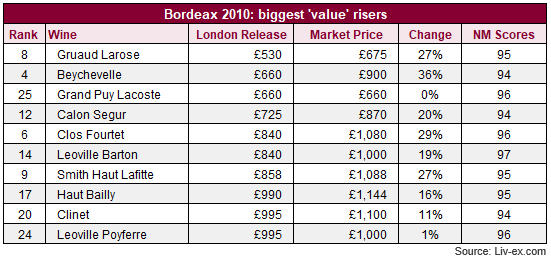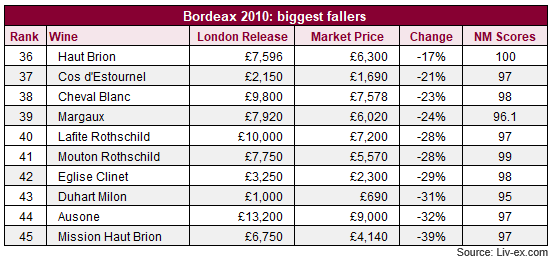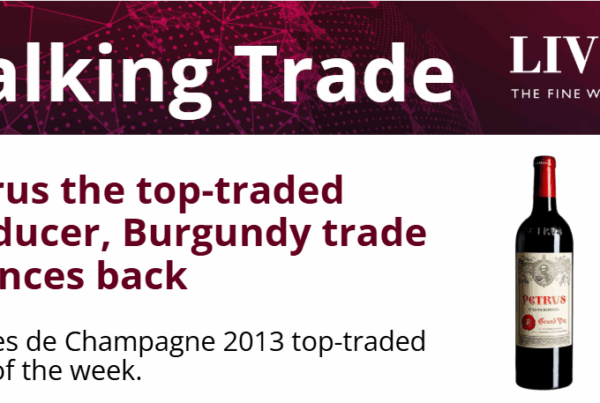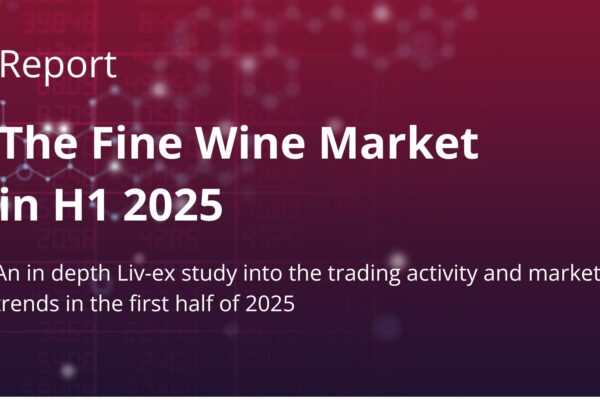Following up on last week’s post, Bordeaux 2010 revisited: 10 years on, today’s blog will examine the top risers and fallers from the 2010 vintage within the Bordeaux 500.
On average, the wines within the Bordeaux 500 have seen very little (-0.3%) price movement since their releases nine years ago. However, there has still been some large movers, as we will examine below.
Risers

Of the top five risers, three came from the Left Bank (Petit Mouton, Pape Clement, Beychevelle) and two from the Right Bank (Le Pin, Lafleur). On average, the wines from the Left Bank released at £1,564 per 12×75– 76% lower than the Right Bank average (£6,293). However, the Right has had a better average performance- up 10.6% compared to the Left Bank (+5.9%).
Overall, Le Pin 2010 has been the best performing wine. Released at £18,000 per 12×75 ex-London, it now trades at £32,000 per 12×75 – an increase of 78%.
It appears though, that ‘value’ options have been favoured among the trade: the ten wines that released at under £1,000 a case are up an average of 19%. The remaining 40 wines that released over £1,000 per 12×75 are down an average 1%. The ten ‘value’ wines are shown in the table below:

Fallers

Four out of the five First Growths made the list of biggest fallers. The 2010s were released higher than the 2009s to the surprise of many, due to seemingly endless demand from Asian buyers. Merchants were confronted with not just one release price, but three tranches of release. This meant holding back their final price until all tranches were out and the average cost could be calculated. So while a lucky few were able to secure Lafite Rothschild at £10,000, many paid much more – closer to £12,000.
Speculation was at its peak throughout the supply chain and on to the end consumer. As it turned out, the 2010 release was the peak of the market. Some wines were to halve in value before the rout was over.
Sauternes
The biggest fallers however came from Sauternes. While their quality was never questioned, the unfortunate emerging trend of releasing them linked to allocations of the highly desirable red wines from the same stable, meant buyers were prepared to take them on and then dump them simply to secure their allocations of the latter. Subsequently, the five Sauternes in the Bordeaux 500 have fallen more than 40% from their release and show little sign of recovery.




